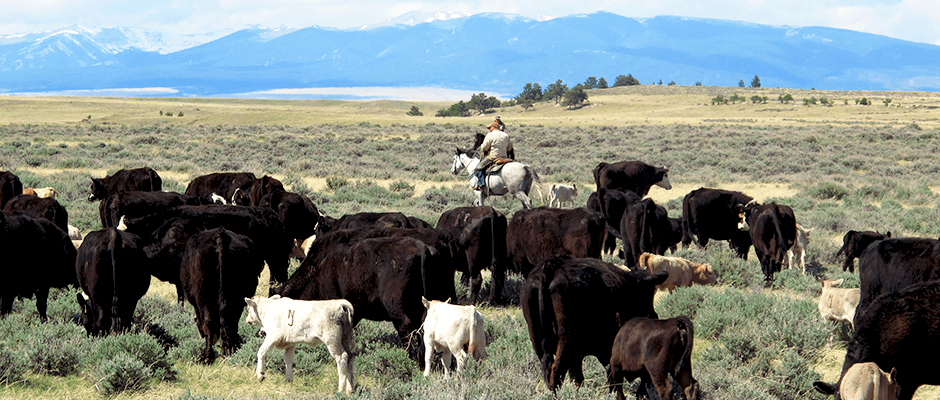Share this article
JWM study: Grazing shows little effect on grouse nesting
As habitat loss and fragmentation continue to threaten the greater sage grouse (Centrocercus urophasianus), a study in Montana found livestock grazing seems to have little impact on the bird’s nest success, and rotational grazing, meant to improve habitat for the grouse, offers little benefit.
“We were surprised,” said Joe Smith, lead author of the study on early view in the Journal of Wildlife Management and a post-doctoral researcher at the University of Montana’s wildlife biology program. “We thought nest success was going to be the mechanism where these grazing systems were going to have a big effect.”
Previous studies had shown a strong link between grass height near the nests and nest survival, Smith said, suggesting that taller grasses provide important cover to protect the birds from nest predators. But his team found no such link.

A greater sage grouse displays in Montana, where researchers found grazing had little impact on the birds’ nest survival.
©USFWS
Instead, Smith said, other changes in land use, including conversion to cropland, oil and gas operations and infrastructure development, may have far greater impacts on greater sage grouse than ranching.
“We may have focused disproportionately on grazing, given how little information we really have about how it affects the population,” he said. “I think it’s important to stay focused on these broad-scale drivers of ongoing habitat loss first and foremost. In the counties where our study took place, I can identify at least four different parcels that have been converted from native grassland to cropland in the last 10 years, and each one is several thousand acres. Those are big habitat losses that are happening overnight.”
The study found nesting success was similar among different grazing management systems, and rotational grazing, which keeps livestock off of designated areas to allow vegetation to recover, didn’t increase nest survival.
However, Smith noted, the study did not look at other factors, such as adult female and chick survival rates, which may show benefits from rotational grazing. And he cautioned that the results he found in Montana may not carry through elsewhere in grouse habitat, including the Great Basin, where the vegetation survives on less summer rainfall and didn’t coevolve with heavy bison (Bison bison) grazing.
The study was released six years into a 10-year study looking at a broad range of possible impacts of grazing on greater sage grouse.
“We don’t want people to interpret our findings as ‘grazing management doesn’t matter,’” Smith said. “We know the importance of good grazing management to the long-term resilience of these ecosystems for a lot of other reasons. I guess the takeaway is that grazing management doesn’t have quite as strong a link with nest success as we previously thought.”
TWS members can log into Your Membership to read this paper on early view in the Journal of Wildlife Management. Go to Publications and then Wildlife Society Bulletin.
Header Image: A rancher in Joe Smith’s study area moves cattle back onto native sagebrush-grassland pasture after branding. ©Joe Smith








